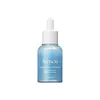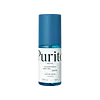What's inside
What's inside
 Key Ingredients
Key Ingredients

 Benefits
Benefits

 Ingredients Side-by-side
Ingredients Side-by-side

Water
Skin ConditioningPropanediol
SolventGlycereth-26
HumectantGlycerin
HumectantSodium Hyaluronate
HumectantNiacinamide
Smoothing1,2-Hexanediol
Skin ConditioningButylene Glycol
HumectantEthylhexylglycerin
Skin ConditioningPolyglyceryl-10 Myristate
Skin ConditioningAdenosine
Skin ConditioningPolyglyceryl-10 Laurate
Skin ConditioningDextrin
AbsorbentPanthenol
Skin ConditioningBetaine
HumectantGardenia Florida Fruit Extract
Skin ConditioningCamellia Sinensis Leaf Extract
AntimicrobialOryza Sativa Lees Extract
Skin ConditioningAloe Barbadensis Extract
Skin ConditioningSalix Alba Extract
Skin ConditioningMelilotus Officinalis Extract
AstringentVaccinium Angustifolium Fruit Extract
Skin ProtectingGlyceryl Acrylate/Acrylic Acid Copolymer
HumectantPvm/Ma Copolymer
Emulsion StabilisingCaprylic/Capric Triglyceride
MaskingHydrogenated Lecithin
EmulsifyingPolyglyceryl-10 Oleate
Skin ConditioningCeramide NP
Skin ConditioningHydrolyzed Dna
Skin ConditioningCopper Tripeptide-1
Skin ConditioningAcetyl Hexapeptide-8
HumectantGlycosphingolipids
EmollientSodium Ascorbyl Phosphate
AntioxidantPotassium Hyaluronate
Skin ConditioningSodium Hyaluronate Crosspolymer
HumectantHydroxypropyltrimonium Hyaluronate
Hydrolyzed Hyaluronic Acid
HumectantHyaluronic Acid
HumectantHydrolyzed Sodium Hyaluronate
Skin ConditioningDisodium EDTA
Pentylene Glycol
Skin ConditioningPalmitoyl Pentapeptide-4
Skin ConditioningSodium Acetylated Hyaluronate
HumectantTripeptide-1
Skin ConditioningPalmitoyl Tripeptide-1
Skin ConditioningOligopeptide-1
Skin ConditioningOligopeptide-2
Skin ConditioningPalmitoyl Tetrapeptide-7
Skin ConditioningHexapeptide-9
Skin ConditioningWater, Propanediol, Glycereth-26, Glycerin, Sodium Hyaluronate, Niacinamide, 1,2-Hexanediol, Butylene Glycol, Ethylhexylglycerin, Polyglyceryl-10 Myristate, Adenosine, Polyglyceryl-10 Laurate, Dextrin, Panthenol, Betaine, Gardenia Florida Fruit Extract, Camellia Sinensis Leaf Extract, Oryza Sativa Lees Extract, Aloe Barbadensis Extract, Salix Alba Extract, Melilotus Officinalis Extract, Vaccinium Angustifolium Fruit Extract, Glyceryl Acrylate/Acrylic Acid Copolymer, Pvm/Ma Copolymer, Caprylic/Capric Triglyceride, Hydrogenated Lecithin, Polyglyceryl-10 Oleate, Ceramide NP, Hydrolyzed Dna, Copper Tripeptide-1, Acetyl Hexapeptide-8, Glycosphingolipids, Sodium Ascorbyl Phosphate, Potassium Hyaluronate, Sodium Hyaluronate Crosspolymer, Hydroxypropyltrimonium Hyaluronate, Hydrolyzed Hyaluronic Acid, Hyaluronic Acid, Hydrolyzed Sodium Hyaluronate, Disodium EDTA, Pentylene Glycol, Palmitoyl Pentapeptide-4, Sodium Acetylated Hyaluronate, Tripeptide-1, Palmitoyl Tripeptide-1, Oligopeptide-1, Oligopeptide-2, Palmitoyl Tetrapeptide-7, Hexapeptide-9
Sea Water 66.01%
HumectantButylene Glycol
HumectantPropanediol
SolventGlycerin
HumectantWater
Skin Conditioning1,2-Hexanediol
Skin ConditioningCaprylic/Capric Triglyceride
MaskingHydrolyzed Glycosaminoglycans
HumectantBetaine
HumectantEctoin
Skin ConditioningTremella Fuciformis Extract
HumectantTremella Fuciformis Polysaccharide
Emulsion StabilisingSalicornia Herbacea Extract
Skin ConditioningLaminaria Japonica Extract
Skin ProtectingCaulerpa Lentillifera Extract
Acetyl Hexapeptide-8
HumectantCopper Tripeptide-1
Skin ConditioningAcrylates/C10-30 Alkyl Acrylate Crosspolymer
Emulsion StabilisingXanthan Gum
EmulsifyingAllantoin
Skin ConditioningAdenosine
Skin ConditioningTromethamine
BufferingDisodium EDTA
Ethylhexylglycerin
Skin ConditioningSea Water 66.01%, Butylene Glycol, Propanediol, Glycerin, Water, 1,2-Hexanediol, Caprylic/Capric Triglyceride, Hydrolyzed Glycosaminoglycans, Betaine, Ectoin, Tremella Fuciformis Extract, Tremella Fuciformis Polysaccharide, Salicornia Herbacea Extract, Laminaria Japonica Extract, Caulerpa Lentillifera Extract, Acetyl Hexapeptide-8, Copper Tripeptide-1, Acrylates/C10-30 Alkyl Acrylate Crosspolymer, Xanthan Gum, Allantoin, Adenosine, Tromethamine, Disodium EDTA, Ethylhexylglycerin
 Reviews
Reviews

Ingredients Explained
These ingredients are found in both products.
Ingredients higher up in an ingredient list are typically present in a larger amount.
1,2-Hexanediol is a synthetic liquid and another multi-functional powerhouse.
It is a:
- Humectant, drawing moisture into the skin
- Emollient, helping to soften skin
- Solvent, dispersing and stabilizing formulas
- Preservative booster, enhancing the antimicrobial activity of other preservatives
Acetyl Hexapeptide-8, commonly known as Argireline or Acetyl Hexapeptide-3, is a popular peptide in skincare. It’s often referred to as a “Botox-like” ingredient because it helps reduce muscle movement.
By relaxing these micro-movements, Argireline may help minimize the appearance of fine lines and wrinkles. That said, it’s not as powerful as Botox, and research on its long-term effectiveness is still limited.
Beyond smoothing, Argireline may also support collagen production. Collagen is the protein that helps keep your skin firm, bouncy, and well-hydrated by strengthening the skin barrier.
So while Argireline isn’t a miracle fix, it can be a helpful addition to a routine focused on both prevention and skin health.
Read more about other common types of peptides here:
Learn more about Acetyl Hexapeptide-8Adenosine is in every living organism. It is one of four components in nucleic acids that helps store our DNA.
Adenosine has many benefits when used. These benefits include hydrating the skin, smoothing skin, and reducing wrinkles. Once applied, adenosine increases collagen production. It also helps with improving firmness and tissue repair.
Studies have found adenosine may also help with wound healing.
In skincare products, Adenosine is usually derived from yeast.
Learn more about AdenosineBetaine is a common humectant (a substance that promotes retention of moisture). It's known to be gentle on the skin and can help balance hydration.
This ingredient is best for improving hydration and soothing irritated skin. Studies also show it helps even out skin tone.
Fun fact: Betaine is naturally created in the skin and body. The kind found within cosmetic products can be either plant-derived or synthetic.
Another name for betaine is trimethylglycine.
Learn more about BetaineButylene Glycol (or BG) is used within cosmetic products for a few different reasons:
Overall, Butylene Glycol is a safe and well-rounded ingredient that works well with other ingredients.
Though this ingredient works well with most skin types, some people with sensitive skin may experience a reaction such as allergic rashes, closed comedones, or itchiness.
Learn more about Butylene GlycolThis ingredient is an emollient, solvent, and texture enhancer. It is considered a skin-softener by helping the skin prevent moisture loss.
It helps thicken a product's formula and makes it easier to spread by dissolving clumping compounds.
Caprylic Triglyceride is made by combining glycerin with coconut oil, forming a clear liquid.
While there is an assumption Caprylic Triglyceride can clog pores due to it being derived from coconut oil, there is no research supporting this.
Learn more about Caprylic/Capric TriglycerideCopper Tripeptide-1 (GHK-Cu) is a skin repairing ingredient known for its ability to boost collagen, improve firmness, and support skin regeneration.
It is a complex made up of a naturally occurring peptide (glycine-histidine-lysine) and copper, an essential trace element.
While studying wound healing, researchers noticed GHK-Cu stimulated hair follicle enlargement and growth by keeping hair in its active growth phase longer. This has made it a promising ingredient for hair regrowth treatments.
Some people have reported increased facial hair. While GHK-Cu can make your hair follicles bigger, it usually doesn’t turn soft, barely-visible facial hairs into thick, dark ones.
Anecdotal reports suggest that overusing copper peptides might lead to premature aging due to excess free copper or enzyme imbalances. This claim isn’t backed by large-scale studies.
Unfortunately, there are limited human studies for this ingredient. While early results are promising, many studies are either small, in-vitro, or not rigorously controlled.
For example, there is a 1998 study that explored the effects of copper tripeptide, vitamin C, tretinoin, and melatonin on skin repair and collagen synthesis.
After one month, increased procollagen production was seen in 7 out of 10 participants using copper tripeptide (more than those using vitamin C, melatonin, or tretinoin.
While the study was exploratory, it offers early evidence that copper tripeptide may support collagen production. Larger, well-designed trials are still needed to confirm its potential and understand individual responses.
Read more about other common types of peptides here:
Learn more about Copper Tripeptide-1Disodium EDTA plays a role in making products more stable by aiding other preservatives.
It is a chelating agent, meaning it neutralizes metal ions that may be found in a product.
Disodium EDTA is a salt of edetic acid and is found to be safe in cosmetic ingredients.
Learn more about Disodium EDTAEthylhexylglycerin (we can't pronounce this either) is commonly used as a preservative and skin softener. It is derived from glyceryl.
You might see Ethylhexylglycerin often paired with other preservatives such as phenoxyethanol. Ethylhexylglycerin has been found to increase the effectiveness of these other preservatives.
Glycerin is already naturally found in your skin. It helps moisturize and protect your skin.
A study from 2016 found glycerin to be more effective as a humectant than AHAs and hyaluronic acid.
As a humectant, it helps the skin stay hydrated by pulling moisture to your skin. The low molecular weight of glycerin allows it to pull moisture into the deeper layers of your skin.
Hydrated skin improves your skin barrier; Your skin barrier helps protect against irritants and bacteria.
Glycerin has also been found to have antimicrobial and antiviral properties. Due to these properties, glycerin is often used in wound and burn treatments.
In cosmetics, glycerin is usually derived from plants such as soybean or palm. However, it can also be sourced from animals, such as tallow or animal fat.
This ingredient is organic, colorless, odorless, and non-toxic.
Glycerin is the name for this ingredient in American English. British English uses Glycerol/Glycerine.
Learn more about GlycerinPropanediol is an all-star ingredient. It softens, hydrates, and smooths the skin.
It’s often used to:
Propanediol is not likely to cause sensitivity and considered safe to use. It is derived from corn or petroleum with a clear color and no scent.
Learn more about PropanediolWater. It's the most common cosmetic ingredient of all. You'll usually see it at the top of ingredient lists, meaning that it makes up the largest part of the product.
So why is it so popular? Water most often acts as a solvent - this means that it helps dissolve other ingredients into the formulation.
You'll also recognize water as that liquid we all need to stay alive. If you see this, drink a glass of water. Stay hydrated!
Learn more about Water